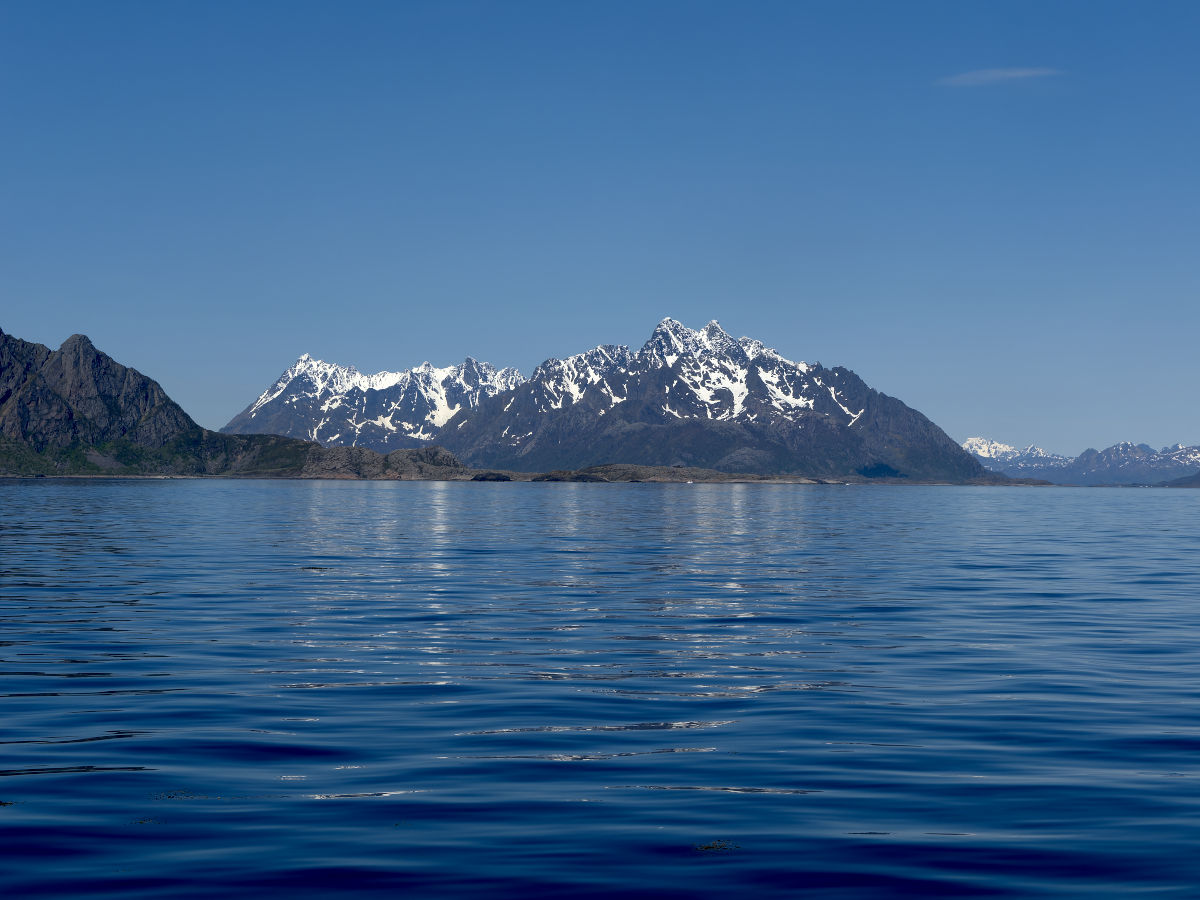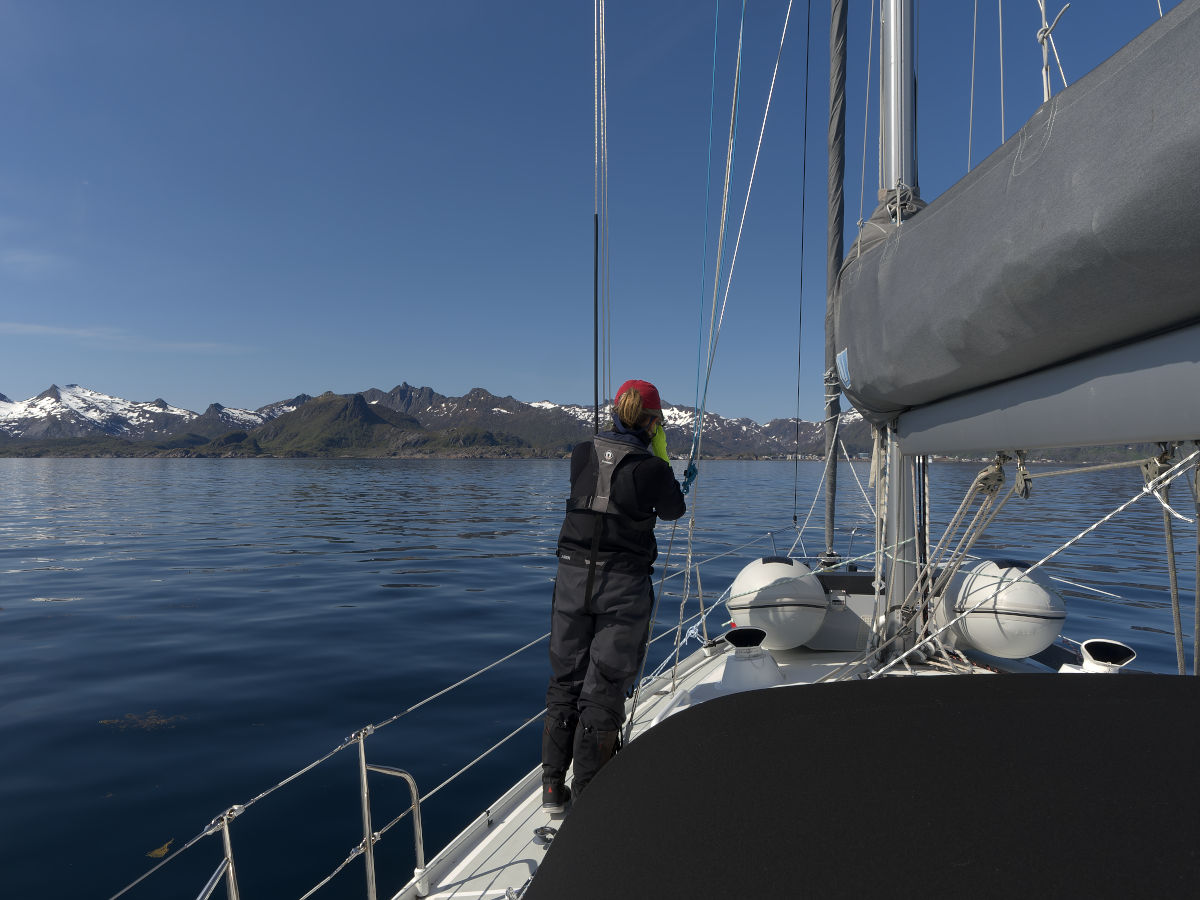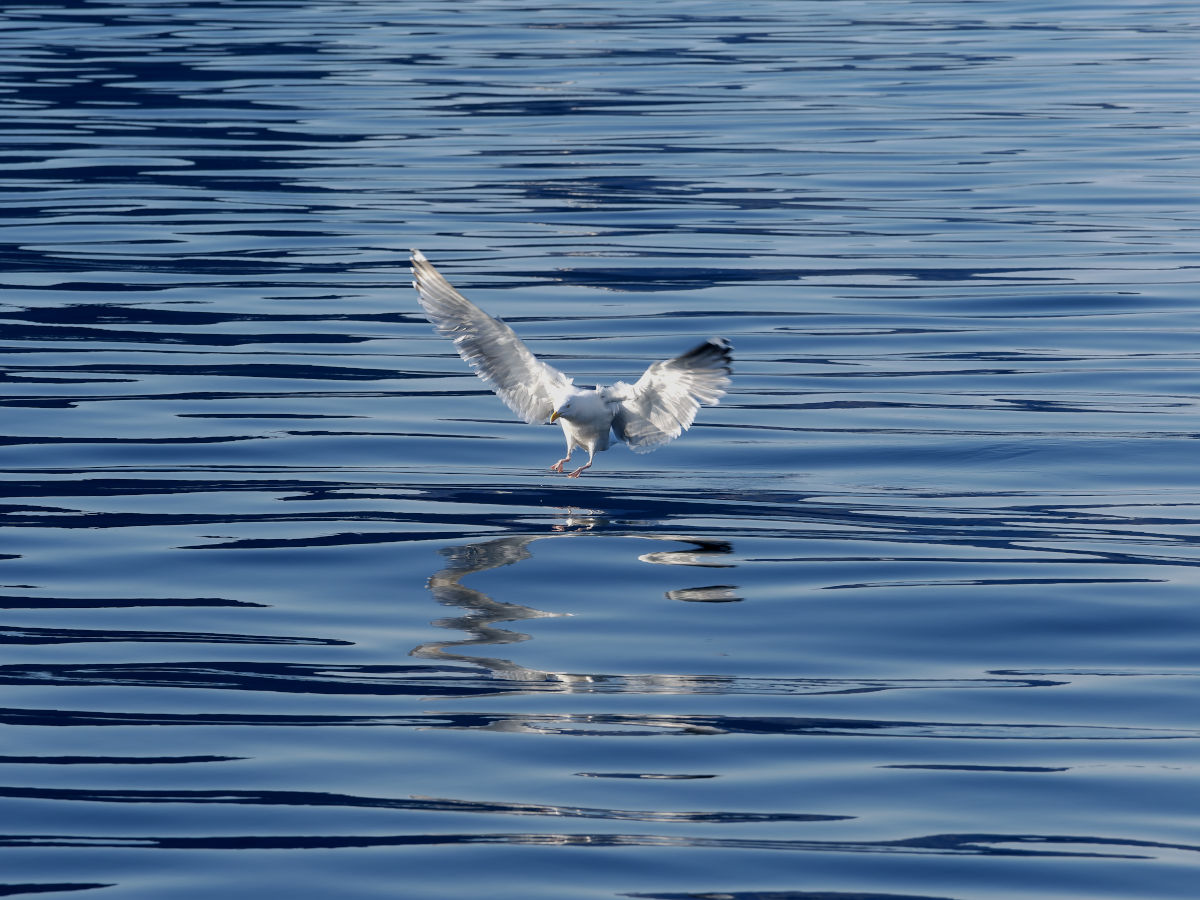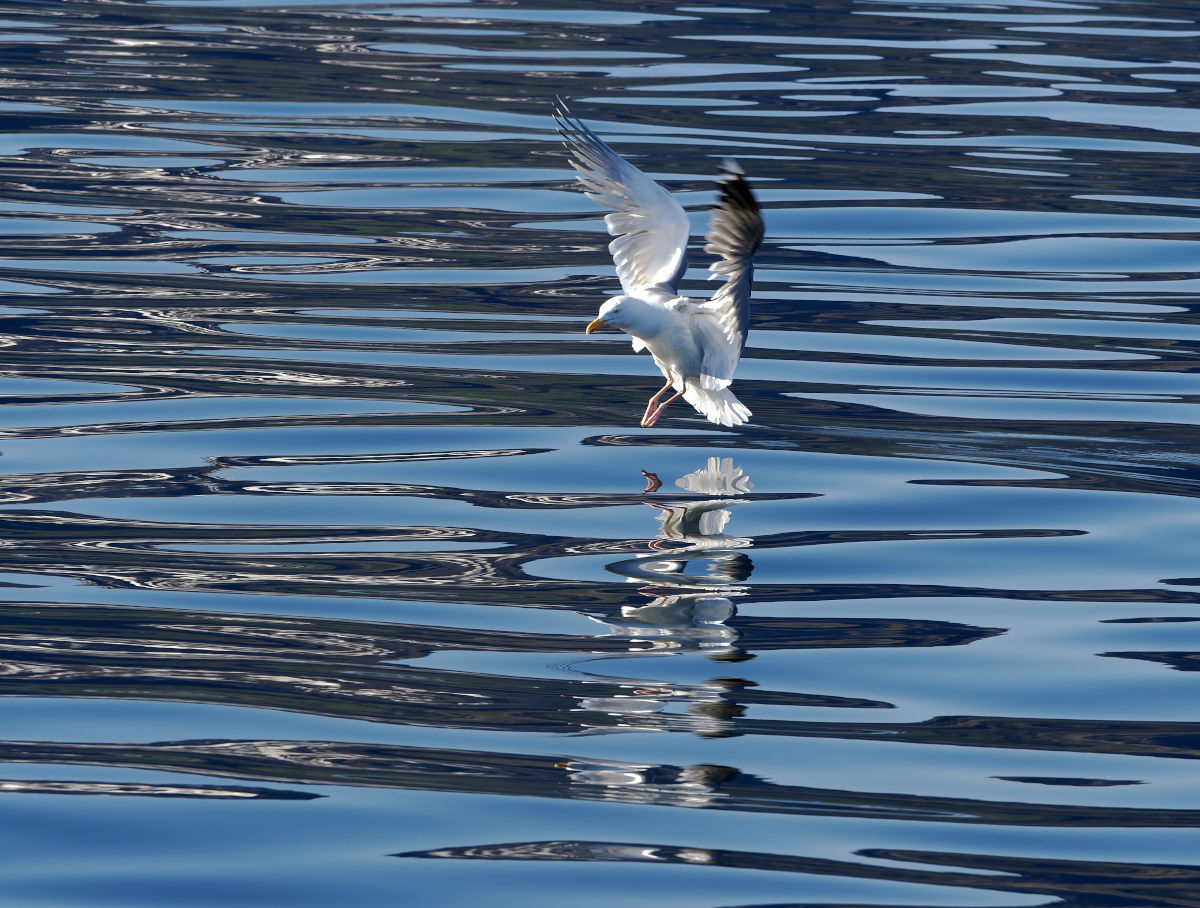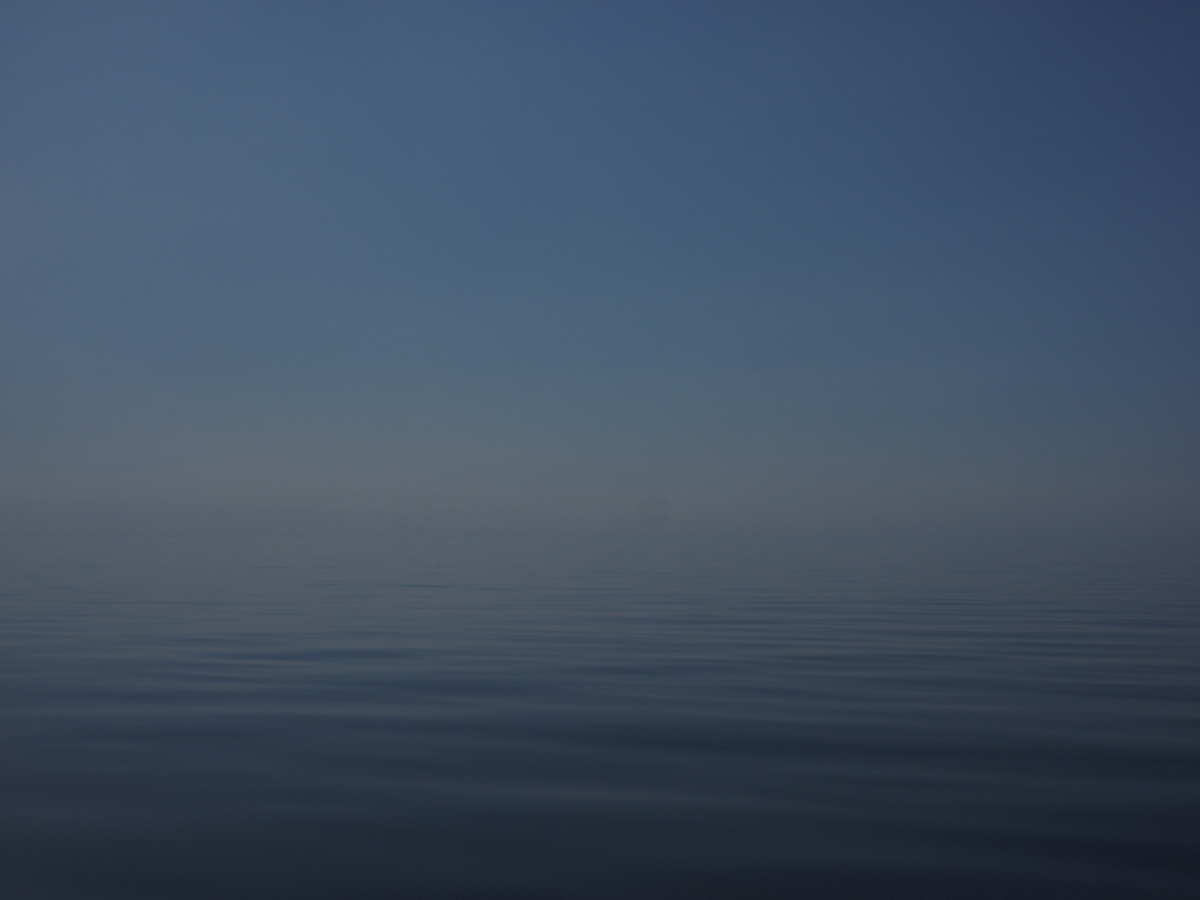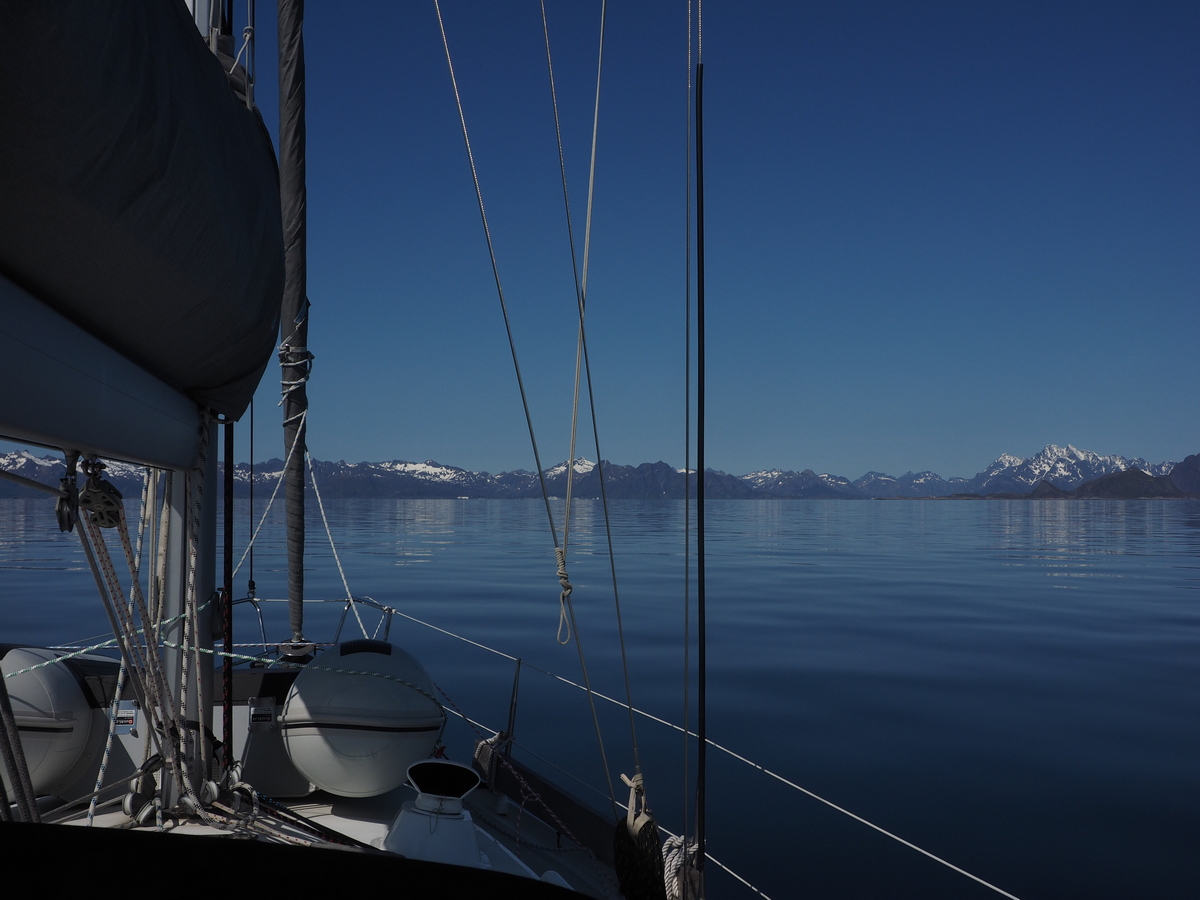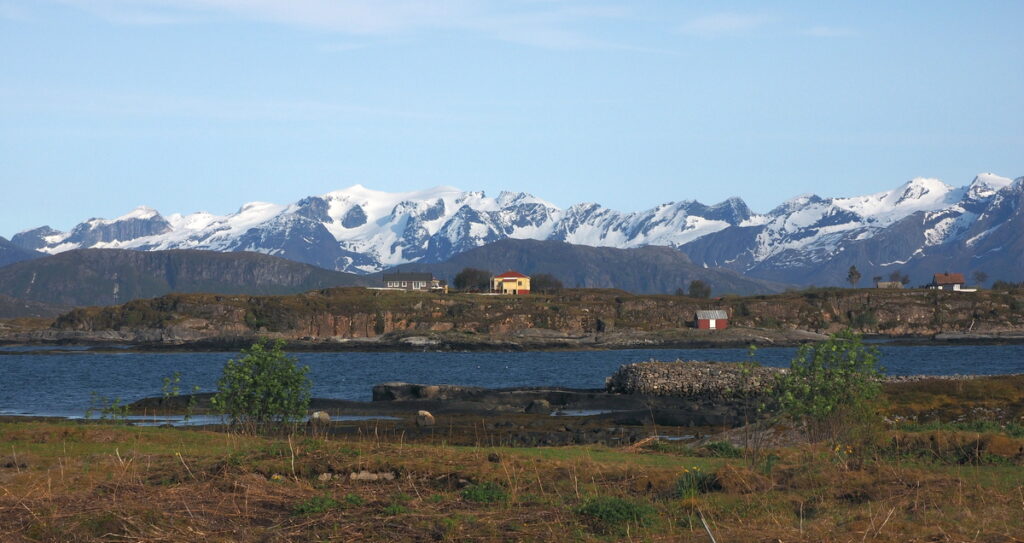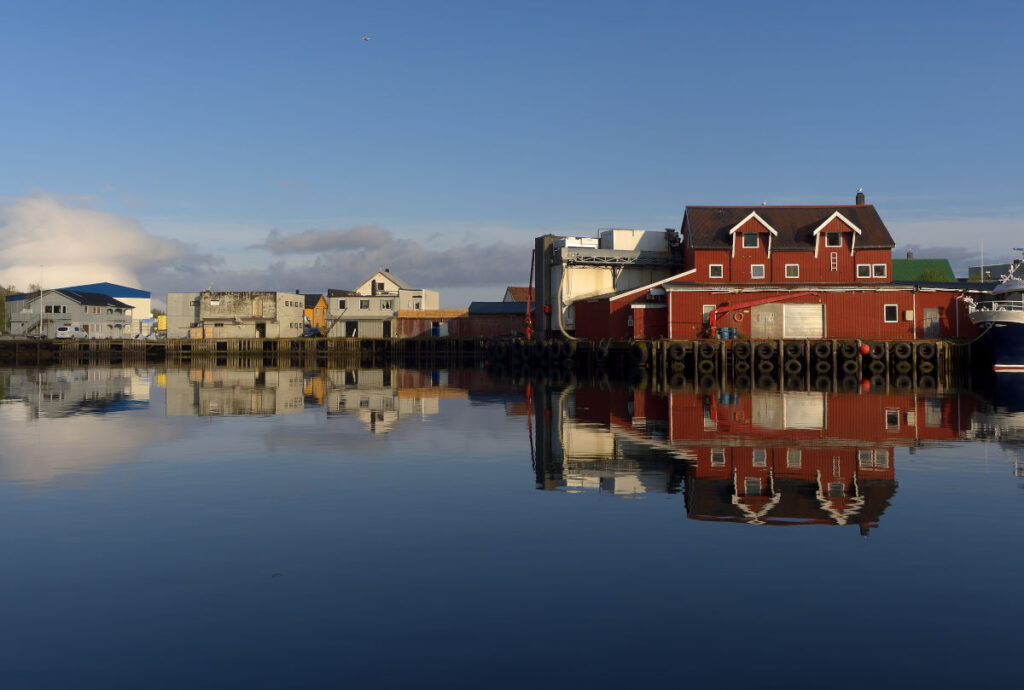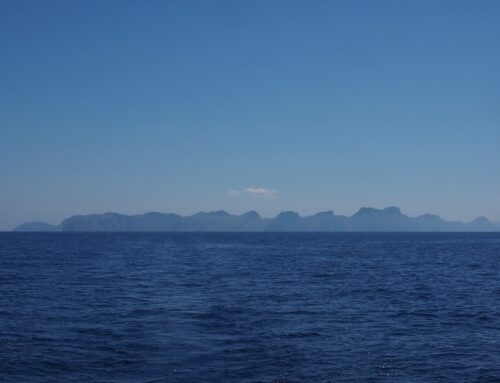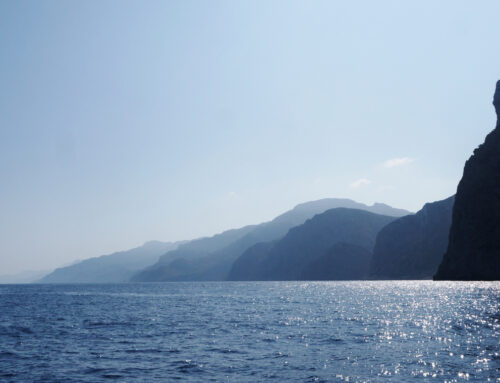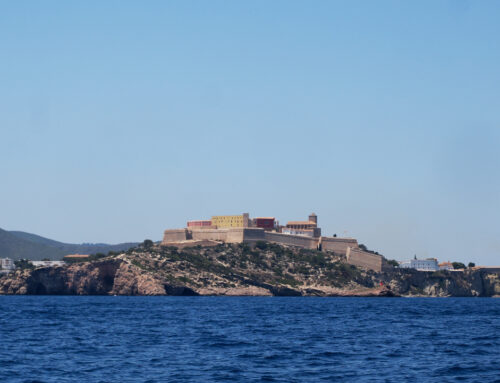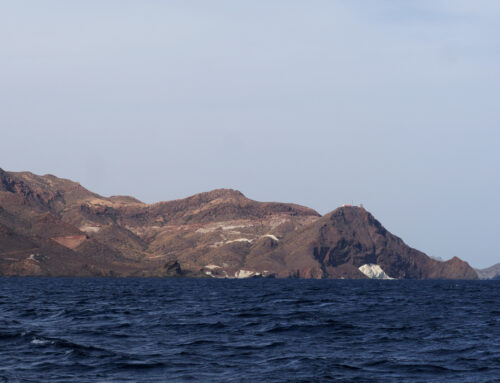Støtt to Svolvær
David took the helm as we departed Støtt at around 2200. Frederieke had done the lion’s share of the watch the night before because David had messed up setting his alarm and had slept for 4 hours (!), so tonight he took a 4 hour watch to start the trip off. To the east the high rounded rock massifs and ragged peaks of the mainland stood tall and abrupt along the coast while to the east and north low islands and skerries poked just over the ocean and under a circling, but never setting, sun.
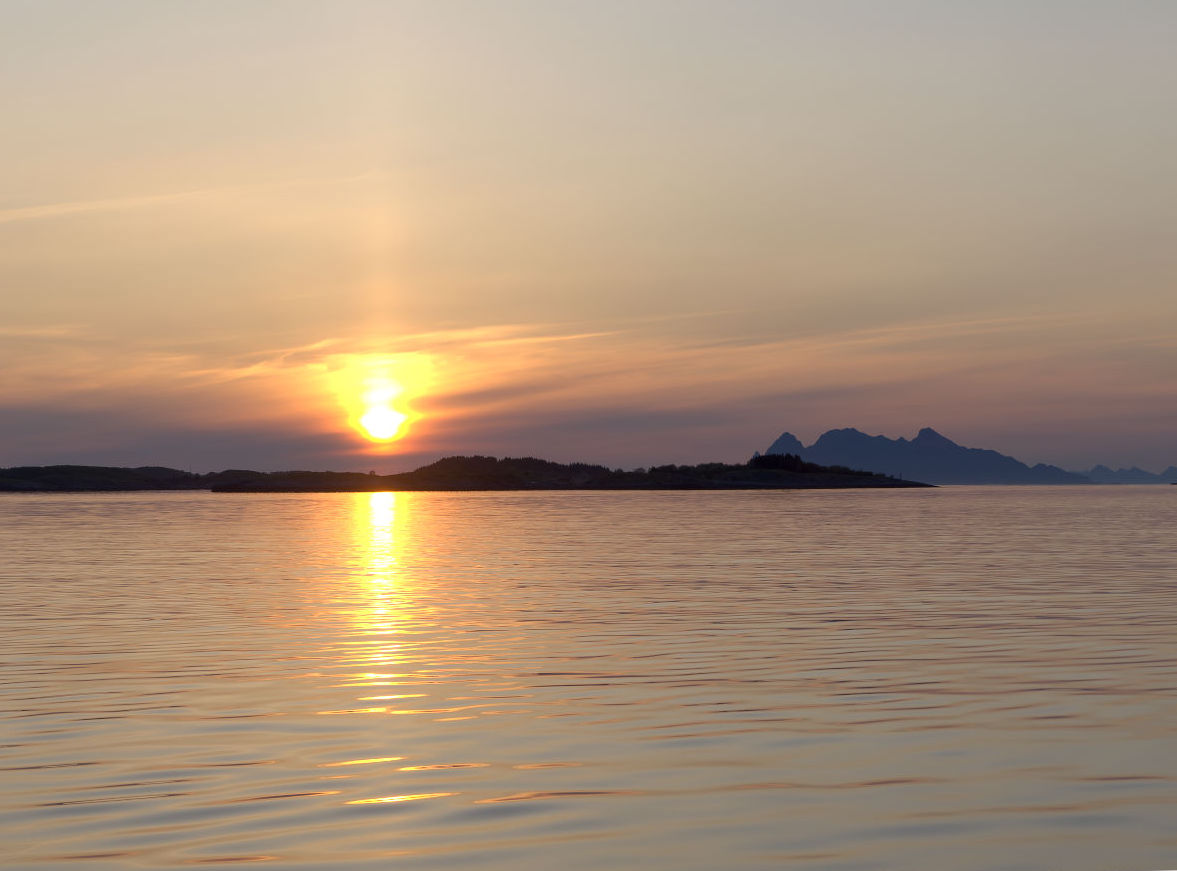
More midnight sun
The further north we went the more jagged the peaks became and even the islands, such as Landegode, began to take on this serrated rock, snow and ice form. By the time David came back for his second watch we were north of Bodø and the mainland was rimmed with a long continuous mantle of high peaks, snow and rock broken only by the smooth white roundness of the Svartisen glacier.

To the north the peaks of the Lofoten and Vesterålen rose out of the sea like a long, uneven row of shark’s teeth.
Eventually we left the shore of the Vestfjorden and began to pick our way through a myriad of low islands and skerries towards the open water that lay between us and the Lofoten islands. These islands were all smooth and ground round by glaciers and the channels between them were narrow and clear and green.

Eider duck
The shorelines were black, brown and tan with kelp and seemed devoid of any life beyond a few listless gulls and the occasional tern. Tidal rocks just screamed out for a mob of seals to be lounging around on them, heads raised to watch us pass, but there was nothing. High rocks that seemed perfect for an otter feeding site or latrine and should have been strewn with the remains of urchins and fish were bare beyond a few droppings from gulls.

The final leg of the journey was a couple of hours crossing a glass smooth ocean to Svolvær. This bit of water is where the cod come to spawn every winter and on which the Lofoten islands built its fishing industry. Today we saw not a single fish swimming or jumping, only one dolphin fin breaching the surface, no seals or whales, and very few seabirds. It doesn’t seem credible that the Norwegians could have so successfully emptied their oceans of marine life and hunted their land animals to apparent extinction that their sea and land seems empty of any life but that of humans. What is going on here?
Svolvær was the biggest harbour we’d been in since Bergen and it all seemed so busy. This was perhaps amplified by the last couple of days where we’d been missing sleep and operating around the clock. We checked the main harbour but, being Saturday, the berths there were full of small day boats, there were lots of people around and it all seemed bustling and a bit industrial. Instead we headed around to the Marine Pollen, just out of town.
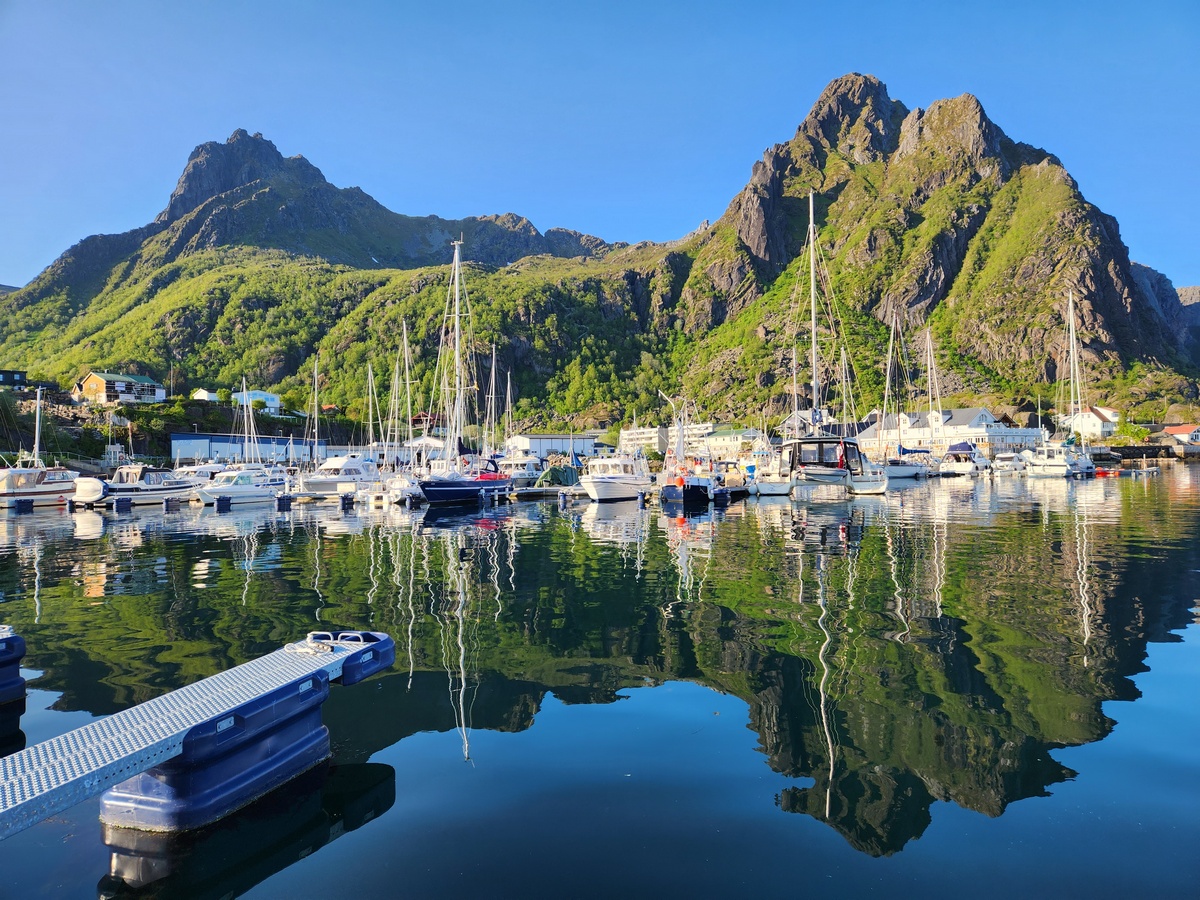
View from Yuma in MarinePollen towards Fløya and Blåtind
Here we found a quiet harbour under the towering peaks of Fløya, Blåtind and Tuva. With just a 15 min walk into town this was a much better option.

